#stellwagen bank
Explore tagged Tumblr posts
Text
Smelly Gas Helps Researchers Track Right Whales
In the vast open ocean, how does a large animal like a North Atlantic right whale find enough food to eat? Scientists suspect whales are following odors produced by the natural chemical compound dimethyl sulfide (DMS), a smelly gas released when the copepods eat phytoplankton. To predict where right whales will be aggregating, scientists at NOAA's Stellwagen Bank National Marine Sanctuary are conducting groundbreaking research following the same scent trail the whales may be using to locate their favorite food.
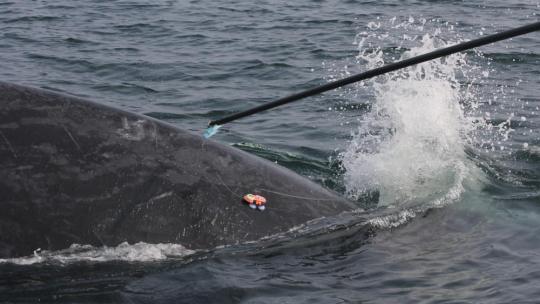

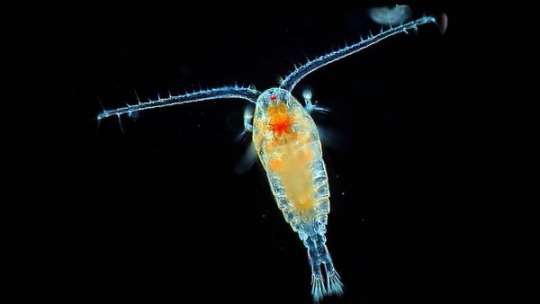
Why does this matter? Click to learn more:
#ocean#noaa#earthisblue#nature#science#national marine sanctuary#conservation#whales#north atlantic right whales#stellwagen bank#cape cod#gulf of maine#endangered species
74 notes
·
View notes
Photo

Massachusetts, US
A young humpback whale, megaptera novaeangliae, breaches while feeding in the waters of the Stellwagen Bank National Marine Sanctuary off the coast of Provincetown.
Photograph: CJ Gunther/EPA
#cj gunther#photographer#epa#massachusetts#united states#humpback whale#whale#animal#megaptera novaeangliae#stellwagen bank national marine sanctuary#provincetown#nature
33 notes
·
View notes
Text
Ship Noises Mute the Songs of Humpback Whales
Drowned out by the din of passing ships, humpback whales attempting to breed off the coast of Japan are cutting their conversations short.
— By Katherine J. Wu

A Humpback Whale breaching near Stellwagen Bank National Marine Sanctuary in Massachusetts Bay. These whales may be imperiled by the sounds of passing ships, which silence their songs during mating season. Photo Credit: Whit Welles, Wikimedia Commons
With Its Enigmatic Chorus of Clicks, Groans, and Whistles, the haunting opus of the humpback whale (Megaptera novaeangliae) is one of the ocean’s most striking sounds. Every winter, humpbacks may swim thousands of miles to their seasonal breeding grounds, where males competing for mates fill the waters with soft serenades. But off the coasts of Japan, these seas are falling silent—and it seems humans are to blame.
Today, in the journal PLOS ONE, researchers report that the noises emanating from human-operated cargo ships disrupt the mating songs of humpback whales. Drowned out by the underwater din, some whales are even going completely mum in the vicinity of these vessels—which could have serious consequences for their reproductive success.
Beneath the surface of the sea, light falters fast. But because sound travels faster in water than air, keen audiophiles like the humpback whale use sound to navigate the dimly lit underwater world. These gentle giants engage in casual chatter year-round, but breeding season tends to feature prominent displays of song from males. Whale compositions are exquisitely complex, with at least 34 distinct sound types in the repertoire. Males will carefully remix their melodies as the years go by, and even pass tunes from population to population like vocal culture.
Despite all this, scientists still aren’t entirely sure why male humpbacks sing. Though musicality surges during periods of mating, song could serve a multitude of purposes, from gruff territorial warnings to come-hither calls. Whatever the whales’ rationale, it’s clear that song is crucial: Once they’ve warmed up, humpbacks can sing for hours on end, their ghostly echoes reverberating up to 100 miles through the surrounding sea.
youtube
But when humans enter the mix, being pitch perfect can be a double-edged sword. Unnatural noises from technological advancements like seismic airguns and military sonar have permanently disabled—and even killed—whales and their seafaring relatives.
Even the low-frequency hum of ships appears to perturb whales in conversation. The drones emitted by these ships can actually overlap with the frequencies of whale song, making it more difficult for humpbacks to pick out important bits of intel from the surrounding cacophony—the underwater equivalent of struggling to hear a friend in a busy restaurant.
Several researchers have observed whales changing their behavior in the presence of ships. However, compared to unmistakable consequences from airguns and sonar, it’s been challenging to reach a consensus on the extent of the effects of these more muted sources of noise, explains study author Tomonari Akamatsu, a biologist at the Japan Fisheries Research and Education Agency. In shipping hubs that see a lot of traffic, for instance, it’s difficult to disentangle which among the many possible disturbances are most problematic.
But the small outpost of Chichijima in Japan’s Ogasawara Islands presented a rare opportunity for Akamatsu and his colleagues. Separated from the southeastern coast of Japan by over 600 miles, the 2,000 or so residents of Chichijima receive just one daily ship: the Hahajima Maru, a small passenger-cargo vessel that ferries in a regular supply of goods and people from afar.
For the most part, the waters in this remote part of the world are quiet. But each winter, the seas swell with the symphony of hundreds of humpback whales eager to mingle with their mates—giving the researchers the chance to observe the effects of a single ship on the behavior of a wild population. The pristine nature of this locale stripped away other variables that could muddy the waters—other vessels, for instance, or inconsistent traffic.
“This study presents a really special and unique situation,” says Rosalind Rolland, a whale expert and veterinarian at the Anderson Cabot Center for Ocean Life at the New England Aquarium who did not participate in the research. “It’s very difficult to find anywhere in the ocean where there is just a single source of ocean noise. Most times there is noise from all directions.”
By placing two recorders in the waters near Chichijima, the researchers captured a series of whale vocalizations between the months of February and May 2017. Each day, they recorded one or two male humpbacks, amassing tracks of 53 soloists in total—half in the presence of the ship, and half without. The team also used the recordings to pinpoint the whales’ positions relative to the machinery as they sang, tracking their movements through time.
When the team mapped out the whales’ responses, the results were sobering. If the vessel was present, it produced, at its loudest, about 150 decibels of noise, comparable to the volume of a shotgun—and humpbacks seemed to shirk from its path, vacating the areas closest to the shipping lane. The whales that remained within 1200 meters of the ship produced fewer sounds overall. Some even cut their serenades off entirely—and most who did still hadn’t resumed their songs half an hour after the ship had passed through.
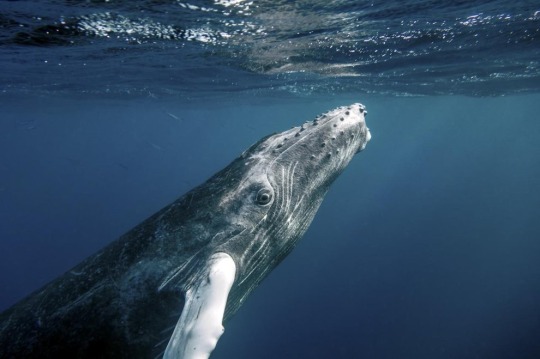
Humpback Whales rely on sound to communicate in the dark ocean waters. During their winter breeding season, males will sing for hours on end—but their serenades may be stifled by the sounds of passing ships. Photo Credit: Christopher Michel, Flickr
Akamatsu had initially assumed that in the presence of the ship, the humpbacks would raise their voices or change the frequency at which they sang—both strategies that might enable whales to discern calls above the clang and clamor. But, he says, perhaps this reticent response is an adaptive, energy-saving strategy.
“It’s actually very clever,” Akamatsu explains. “They know it’s temporary, so they just wait for it to pass.”
Vocal adjustments, after all, are exhausting. Even 500 to 1200 meters away from the ship, the whales were still contending with a noise level of about 100 decibels—roughly equivalent to a motorcycle or a raucous rock band. Perhaps, instead of attempting to outperform the uproar, humpbacks were simply waiting out the storm.
Every whale who stopped his song did eventually rebound from the chorus interruptus—and such resilience may spell tentatively good news for the residents of Chichijima, who remain tied to the Hahajima Maru’s regular visits. “This ship is a lifeline for an isolated island,” Akamatsu explains. “Humans need that ship to survive.”
But Michelle Fournet, a wildlife scientist in the Bioacoustics Research Program at Cornell University, points out that it’s also possible the humpbacks’ silence may not be indicative of flexibility at all. Muted by the regularity of passing ships, whales may be running out of sustainable strategies to cope, and instead accepting defeat. While bellowing above the fray may be exhausting, it at least offers whales a fighting chance of still being heard. Complete silence, on the other hand, brings the probability of communication down to zero. If humpbacks want any shot at coupling up, they can only wait so long for ambient noise to die down.
“Humpbacks have to contend with a lot of variability,” says Fournet, who was not involved in the research. “And they’re capable of adapting to natural sounds. But they may not always be able to apply those same strategies to [human-made] noise.”
While no long-term repercussions have yet been found, it will be imperative to measure the ship’s effects on humpback reproduction, Fournet adds. Even though most populations of humpbacks are no longer considered endangered, pods around the world remain vulnerable to human interference. And despite decades of study, researchers are still puzzling through the intricacies of whale song. It’s unclear how disastrous even the tiniest tweaks to a tune could be for humpbacks trying to find each other in the dark.
And, of course, the calm of Chichijima is the exception, not the rule: Most ships don’t sail solo. Acoustic pollution from human-made vessels will likely be on the upswing for years to come, warns Paul Wensveen, a biologist who studies marine acoustics at the University of Iceland. Even technological Band-Aids like insulators, which muffle the sound from ships’ propellers, are quickly overwhelmed by the sheer volume of noise radiating from the world’s busiest ports.
If humankind’s presence in the ocean continues to grow, there may soon be little stopping the whales’ brief intermission in song from turning into an irreversible coda.
“Some of the whales’ strategies have been successful so far,” says Fournet. “But as the ocean gets louder, and more vessels come in, we can only expect to see more changes.”
#Youtube#Nature#NOVA#Humpback 🐋 Whales 🐳#Katherine J. Wu#Stellwagen Bank | National Marine Sanctuary | Massachusetts Bay
0 notes
Note
Top 5 things to see in nature!
(1) This wasn't something I saw, exactly - an overcast night out of sight of land on the Stellwagen Bank, heading up to the Gulf of Maine, couldn't see shit but you could hear the whales breaching and breathing in all the apparent nothingness. I don't think I've ever come so close to belief as I had there.
(2) I was hoofing it five miles back to the trailhead in the start of a snowstorm (yeah, yeah, I was being an idiot. and i forgot my gaiters so my socks were VERY wet.) last year and, at a vantage point, with the wind picking up, I saw three raptors over the valley below - I couldn't tell what they were and I was telling myself I wasn't supposed to be stopping because I did not want to get stuck on that mountain - but for a moment, there wasn't anywhere else in the world I was supposed to be.
(3) it stings like hell but I'm a huge fan of exhaling, sitting on the seafloor and staring up at the sun through the water like stained glass at least once a summer. (goggles ruin the effect for me. but then, see example 2: yeah, yeah, i'm an idiot.)
(4) I was walking down a gravel road between two sections of a trail this past summer, the pollen was heavy and drifting in the sun, the birds were singing, my footsteps crunched, and there was peace in all the world in that moment. (5) Horseshoe crabs. I love them.
Bonus: I'd be lying to you if I said there wasn't a real sense of relief or joy in seeing my car in the trailhead lot after twelve or fourteen hard miles!
7 notes
·
View notes
Text
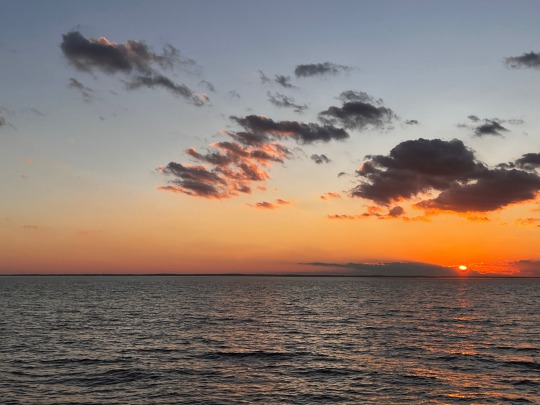
Saturday, 10.28.23
(2:30) Whale watching in Stellwagen Bank National Marine Sanctuary 🐋
Dinner with bf at Wagamama
Played online Smash doubles with bf
AHHHHHHH I FINALLY GOT TO GO WHALE WATCHING WHICH I’VE BEEN WANTING TO DO FOR SO LONG!!!! It was a surprise anniversary gift from my bf and omfg I love this man so much it was amazing. The weather was beautiful, and we saw so many humpbacks!! All of the known whales in Stellwagen have names, which is crazy because I don’t know how the naturalists recognize them from that far. The ones we saw were:
Bounce & her calf: came up a few times pretty close to our boat. Calf was estimated to be about 10 months old.
A+, Milkweed, & 3.14: group of 3 who we followed for a long time. Came up several times between long dives. The last time we saw them, they unexpectedly popped up SO close to where I was on the boat!
Wizard: the coolest one!! She kept coming up and smacking her tail against the water (called lobtailing), which was very loud. She then joined up with the group of 3 above for a short time, so I think she was communicating her desire to join them.
Spell: Wizard’s calf who we happened to see separately from her! She was off at a distance and I didn’t have good binoculars so I didn’t see too much of her, but the naturalists recognized her.
This was genuinely one of the coolest experiences of my life, and the naturalists even said we had a really lucky trip because we got to see so many whales. We were standing on the left side of the boat, which happened to be where most of the whales were so they were really right there! I didn’t take any pics of the whales (would be blurry so I’d rather just watch), but I will always remember this experience and I hope I can go again next season!!
0 notes
Text

Sea History 139 - Summer 2012
About
10 The War of 1812: US Revenue Cutter Operations, by William H. Thiesen • 16 War Reporting in 1812-Through Song, by David Hildebrand • 22 History in the Palm of Your Hand-Recreating the Figureheads of the US Navy in Miniature, by Lloyd McCaffery • 26 Stellwagen Bank Celebrates Its 20th Anniversary, by Deborah E. Marx • 28 The History of the "Racing Stripe" Emblem and Brand Identity for World Sea Services and Coast Guards, by William H. Thiesen and Christian Ostersehlte • 38 Managing Titanic, by Deirdre O'Regan
Read it on:https://issuu.com/seahistory/docs/sh_139_summer-2012
#Sea history magazine#magazine cover#Sea history#summer 2012#Sea History 139#ship#history#photo#reading
1 note
·
View note
Photo

Humpback Whale .. [5 / 7] The pattern on the tail fins is distinctive and different for every individual. Stellwagen Bank National Marine Sanctuary, east of Boston, north of Provincetown, MA.
#Sony#Walkcam#RX100M2#fauna#whale#humpback#Stellwagen Bank#Atlantic Ocean#Boston#Provincetown#Massachusetts#USA#cropped
4 notes
·
View notes
Photo

Here’s a photo of my favorite humpback “shuffleboard” feeding. I love her pink pleats, she feeds with such energy!
Photo credit: Seven Seas Whale Watch (not me)
78 notes
·
View notes
Photo





The humpback known as Flounder was having a grand time at Stellwagen today.
3 notes
·
View notes
Text
Humpback Whales at Stellwagen Bank National Marine Sanctuary off Provincetown 08/22/19
Humpback Whales off Provincetown 08/22/19 Part 3 Humpback Whales at Stellwagen Bank National Marine Sanctuary off Provincetown 08/22/19
#2019#Humpback Whale#Humpback Whales#Stellwagen Bank National Marine Sanctuary#Whale#Whale Watch#Whales
2 notes
·
View notes
Text

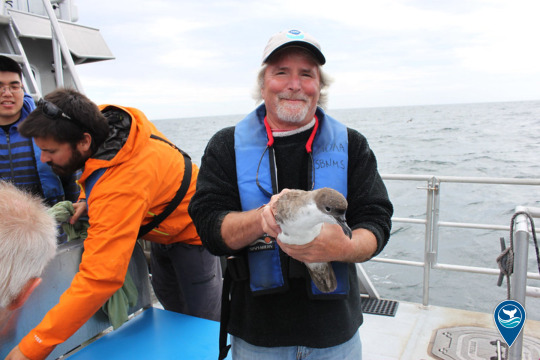


Solving the climate crisis is going to take all of us working together, how can you support climate monitoring at your local sanctuary?
Join us next week to learn about the importance of monitoring climate change impacts in sanctuaries, and how all kinds of visitors - from divers, to teachers, to fishers - are helping to monitor and educate about climate change impacts in NOAA's Stellwagen Bank National Marine Sanctuary and NOAA Florida Keys National Marine Sanctuary.
57 notes
·
View notes
Text
Lindblad Expeditions Launches New Itineraries Along U.S. East Coast
Lindblad Expeditions Launches New Itineraries Along U.S. East Coast
Starting this fall, Lindblad Expeditions is launching seven new itineraries for 2022 and 2023 designed to explore the most ecologically and culturally diverse destinations along the East Coast. They will take a unique expeditionary approach as they go in search of the wild, seldom-seen side of the Eastern Seaboard. Along this dynamic coastline, often not too far from bustling cities, you’ll find…

View On WordPress
#atlantic puffin colony#Channel Islands#coastal maine cruises#eastern seabord cruises#geat gull island#georgia sea turtle center#hudson river cruise#Jekyll Island#lindblad 2022 cruises#Lindblad Expeditions#Mckinney national wildlife refuge#monhegan island#mystic seaport#national geographic sea lion#south carolina cruises#stellwagen bank marine reserve
0 notes
Text


humpback whales at stellwagen bank marine sanctuary, oct 2022
#good morning time for the blogger to briefly become emotional#i've been wanting to see whales ever since i was a small child CONVINCED i'd become a marine biologist#still mad i didn't have the brains Or the willpower to become a scientist BUT it turns out you don't need either to see whales.#you just need like. a friend from the coast. and a job that'll allow you to save up enough to visit them.#the whales will be there it's ok if you take 20 years to find them. chances are they'll still be there in another 20 years time#photo#the sea the sea
18 notes
·
View notes
Photo










#Explore Fenway #Park, Cape Code #Beaches, Freedom #Trail, Stellwagen Bank National #Marine #Sanctuary, and more #stunning #destinations in New England #Region through #fully-furnished #Massachusetts_Vacation_Homes. https://bit.ly/33PoGpU
4 notes
·
View notes
Link
Excerpt from this New York Times story:
A buoy floats in an otherwise empty Lake Huron bay, a little button in the water, only a 10-minute paddle from the beach.
Below it, resting on the bottom in 18 feet of water, lies the remains of the L.M. Mason, a 125-foot wooden schooner caught by a vicious storm on Oct. 22, 1861. Carrying a load of grain, the schooner huddled in this bay off northeast Michigan’s Presque Isle peninsula along with 13 other ships to escape the winds, waves and snow. The other ships survived, but the L.M. Mason was too badly damaged and sank.
Because of its shallow resting place and exposure to the wild storms that buffet this section of Lake Huron — called Shipwreck Alley — only the hull and some supporting beams are left. But the fact that it is 160 years old and still so relatively well-preserved is testament to the unique conditions of the waters in which it rests, part of the Thunder Bay National Marine Sanctuary.
Think of the National Marine Sanctuary System as the underwater equivalent of the national parks. It was created in 1972 amid a growing recognition that marine areas of exceptional historical and ecological significance needed protection, too. A key event spurring the system’s creation was a 1969 oil spill off the Santa Barbara, Calif., coast, which at the time was the worst in U.S. history.
Run by the National Oceanic and Atmospheric Administration (NOAA), the system will celebrate its 50-year anniversary in 2022. It includes 15 salt and freshwater sanctuaries in places like the Channel Islands off Santa Barbara, Stellwagen Bank off the Massachusetts coast, and Flower Garden Banks off the Galveston, Texas, coast in the Gulf of Mexico. There are also two marine national monuments, one of which is Papahānaumokuākea Marine National Monument off the coast of Hawaii, which is larger than the combined area of all the national parks. It is in the process of being designated a sanctuary, which adds additional layers of protection and permanency to the safeguards.
2 notes
·
View notes
Text
A Trip to John F. Kennedy’s Favorite Vacation Destination

Cape Cod, Massachusetts, is a popular summer vacation destination among American tourists because of its close proximity with Boston, MA. It’s renowned for its amazing coastline, beautiful beaches, and local cuisine, restaurants, destination wedding venue, light houses, and lots of recreational activities. The Cape Cod National Seashore comprises of scenic beaches, ponds, marshes, and stunning landscape. The pristine water and coastline of Cape Cod offers many outdoor activities such as snorkeling, kayaking, sailing, swimming, and hiking. Nantucket Whaling Museum offers visitors the first-hand experience to inspect and look ship models, whaling equipment, portraits, scrimshaw, logbooks of the ships, and a 43-foot sperm whale skeleton. Wellfleet Drive-in is a drive-in movie theatre which will take you back to your childhood memory lane. You can explore Cape Cod through the 22 miles paved trail which is considered as the best bike trail in New England. Vacation Rental Houses in Chatham Cape Cod are comfortable and luxurious to move in and comes at very attractive price. These rental houses are renowned for their world class services and comfortability with the owner.
There are numerous vacation rentals home in Cape Cod that offers amazing services and luxury with comfort. These fully furnished family homes are loaded with all amenities and facilities to make your vacation memorable in Cape Cod, MA. 5 bedroom vacation homes Chatham can ACCOMMODATE 10 people and has 2.5 baths with a minimum stay of 2 days. This pet-friendly luxury home has a beautiful interior and exterior with deck and covered dining area. The newly decorated 5 bedroom vacation home is fenced and is perfectly safe of kids too. You can navigate and explore Chatham Cape Cod easily from this rental home. Sandwich Heritage Museum & garden and Sandwich Glass Museum, Pilgrim Monument, Whydah Pirate Museum, 16th century Hoxie House, Truro Vineyards, Stellwagen Bank National Marine Sanctuary, and John F. Kennedy Hyannis Museum are the top destinations in Cape Cod, Massachusetts.
1 note
·
View note